Vaughn Shoemaker
Vaughn Shoemaker was born in Chicago, on 11th August, 1902. Shoemaker studied at the Chicago Academy of Fine Arts and later taught at that school. He became the chief cartoonist for the Chicago Daily News in 1924. In 1925 he joined the Assembly of God church. According to Time Magazine: "Since then, he has never started a day at his drawing board without praying, reading from the Bible." (1)
Chris Lamb, the author of Drawn to Extremes: The Use and Abuse of Editorial Cartoons (2004) argues that Shoemaker "lived in the midwest and reflected the republican, pro-business policies and attitudes of their publishers and editors" Gustavus C. Widney pointed out that the cartoonist was "not a reactionary, but content with the world as he finds it, and he has found it a pretty good sort of place." (2) Shoemaker often included a small man in his cartoons that he called "John Q. Public". (3)
Shoemaker was a strong opponent of fascism. In one cartoon, entitled, The greatest educator of the German nation, He asks if Adolf Hitler, Hermann Göring, Rudolf Hess and Joseph Goebbels are good examples of the Aryan race. He was praised by Zbynek Zeman for his cartoon, Take me to Czechoslovakia (8th September, 1938) that shows that Hitler being driven by the figure of death. (4) Göring was less impressed and described his work as "horrible examples of anti-Nazi propaganda". (5)
Shoemaker twice won the Pulitzer Prize for The Road Back (1938) and Still Racing His Shadow (1947). Shoemaker later worked for New York Herald Tribune, the Chicago American, and Chicago Today. By the time he retired in 1972 he had drawn over 14,000 cartoons. (6)
Vaughn Shoemaker died of cancer in Carol Stream, aged 89, on 18th August, 1991.
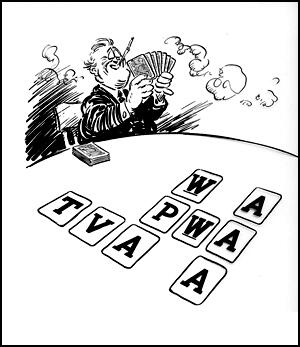
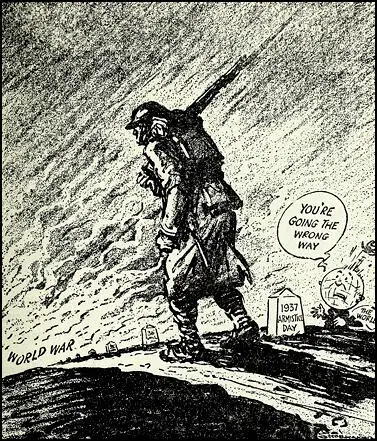
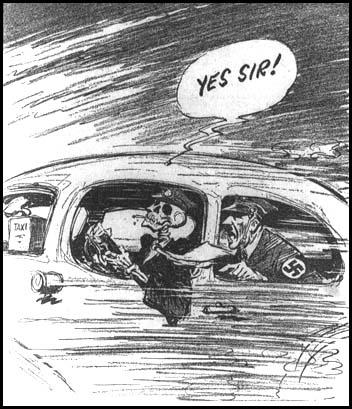
Chicago Times (8th September, 1938)
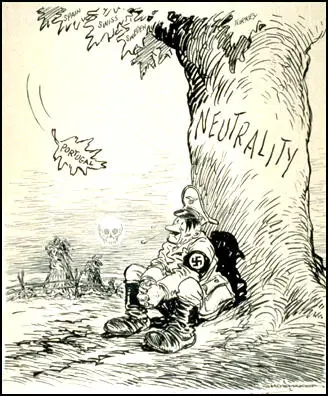
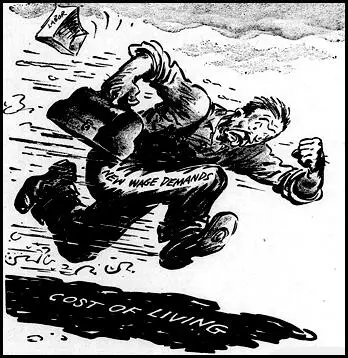
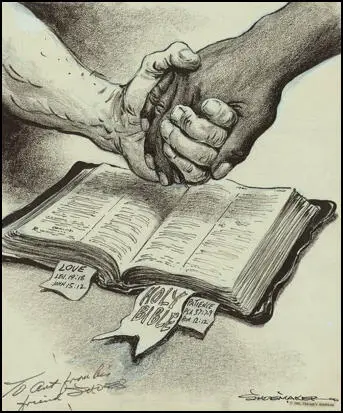
Primary Sources
(1) Time Magazine (25th December, 1939)
This week, the Chicago Daily News prints a cartoon (first published in 1934) which is on its way to like renown (see cut). The cartoonist: Vaughn Richard Shoemaker, Chicago political satirist (famed for his mousy little character, "John Q. Public") and an ardent Christian."Shoe" Shoemaker was self-converted in 1925, joined an Assembly of God church. Since then, he has never started a day at his drawing board without praying, reading from the Bible. But he discovered that "when you become a Christian, you're all alone in the world - especially if you work in a newspaper office." Cartoonist Shoemaker took to lunching once a week with a friend who had also been converted. Their lunches expanded, soon became a Gospel Fellowship Club, which today has 800 members in Chicago, 1,200 in other Midwest cities.
The Chicago Fellows meet for 50¢ lunches at the Brevoort Hotel on Tuesdays, listen to speeches on "How I Came to Jesus," enjoy a half-hour of "Christian fellowship." Most of the Fellows are white-collar workers, with a scattering of executives like Board Chairman James Lewis Kraft of Kraft-Phenix Cheese Corp., Vice President Frank Flagg Taylor of Continental Illinois Bank. Still spark plug of the club is Cartoonist Shoemaker, who contributes drawings to the club paper, lately packed a Tuesday meeting by demonstrating the "Shoescope," a $1,500 contraption which projects his cartoons, as he draws them, upon a screen. The Shoescope is a great attraction in Chicago churches, in which "Shoe" shows it about once a week. A prime favorite is Shoemaker's 1938 Pulitzer Prizewinner, "The Road Back" - a soldier marching to World War.
(2) The New York Times (22nd August, 1991)
Vaughn Shoemaker, an editorial cartoonist who created the character John Q. Public and won two Pulitzer Prizes, died Sunday at the Windsor Park Manor Medical Center in Carol Stream, Ill. He was 89 years old and lived in Carol Stream, a Chicago suburb.He died of cancer, said his physician, Dr. Maurice Birt.
Mr. Shoemaker's most familiar character, John Q. Public, represented the beleaguered American taxpayer. The character appeared first in The Chicago Daily News, the paper on which Mr. Shoemaker began his career in 1922. In 1963 Mr. Shoemaker's cartoons were syndicated to more than 75 newspapers, and by the time he retired, in 1972, he had drawn 14,000 cartoons.
He won his first Pulitzer in 1938 for a drawing, "The Road Back," which showed a World War I soldier marching backwards into war. The caption said, "You're going the wrong way." In 1947, he won his second Pulitzer, for a cartoon titled, "Still Racing His Shadow." In this cartoon a worker, marked "new wage demands," tried to outrun his shadow, "cost of living."
Because Mr. Shoemaker was a devout Christian, he was known at The Chicago Daily News as a "gospel cartoonist." He once said he started each cartoon "on my knees with a prayer."
He worked at the Daily News for 27 years and then moved to the New York Herald Tribune, the Chicago American and the American's successor, Chicago Today, where he retired.
Mr. Shoemaker is survived by his wife, Evelyn, of Carol Stream; a son, Vaughn R. Jr. of Palatine, Ill.; five grandchildren, and 10 great-grandchildren.

